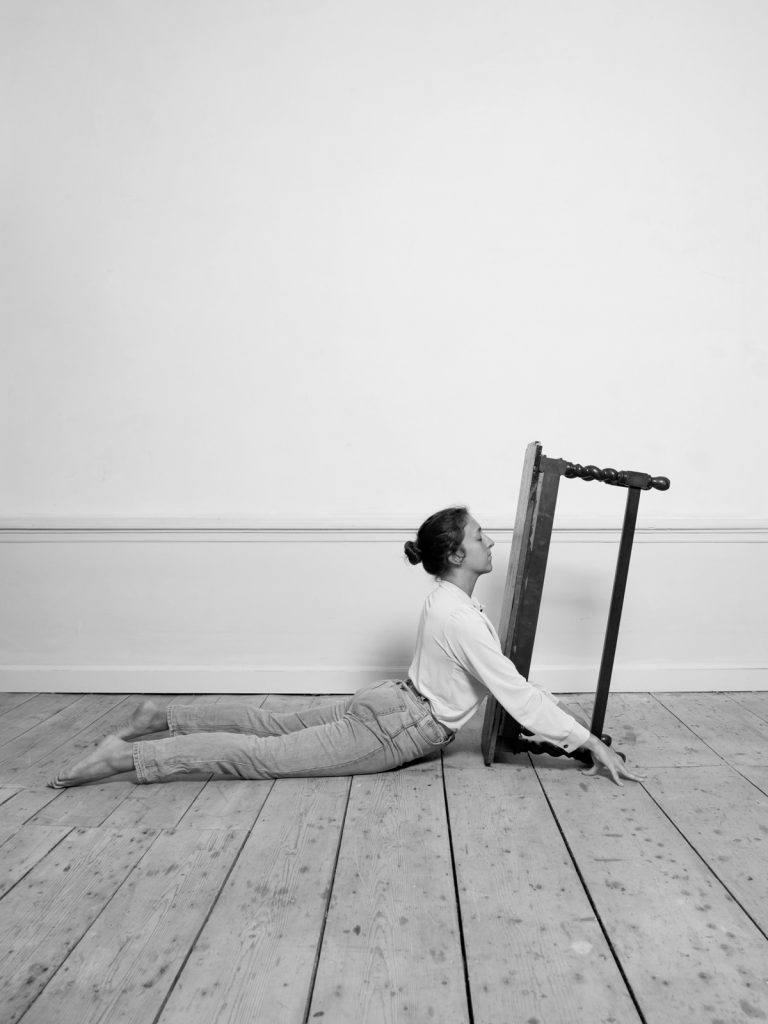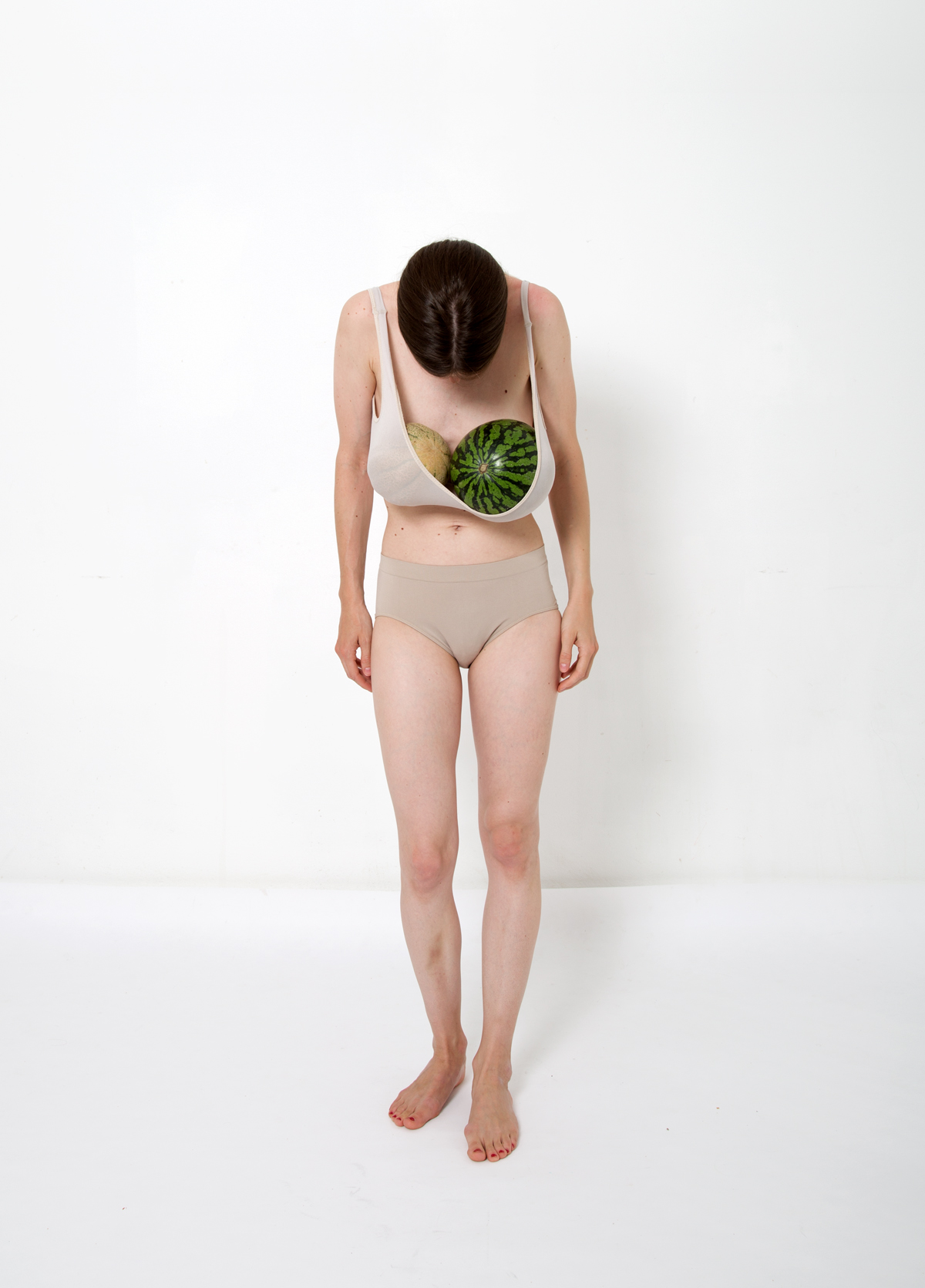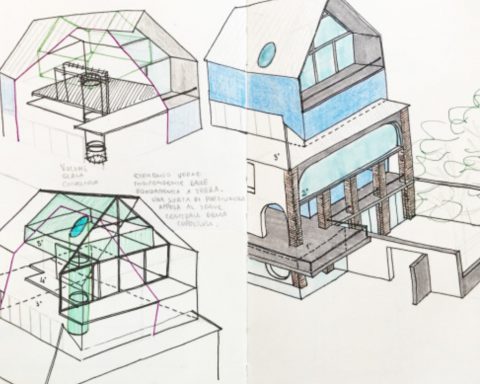The nature of the work of Csilla Klenyánszki is very energetic and performative, although she uses photography as her main medium. The value and the importance of the gestures are revealed by a new playful prospective. The balance is the main point of research of Csilla Klenyánszk (Budapest, 1986)i, who, between gender, identity and parenthood, reflects on new solutions and proposal. It’s not a cure, what she propose are spaces for new atmospheres and possibilities.
Csilla Klenyánszki lives and works in Amsterdam. She is represented by TRAPEZ Gallery.
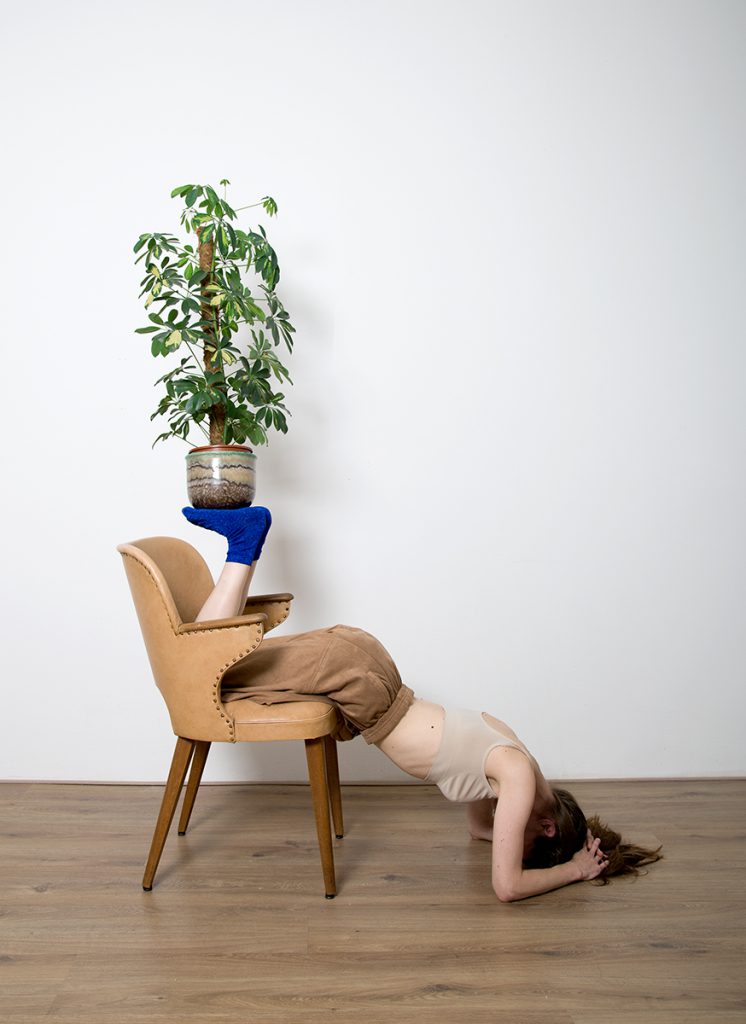
Lisa Andreani: Your recent works seem involved with gender studies and the role of the woman in society. How did this interest grow inside you?
Csilla Klenyánszki: I became more socially aware after I became a mother in 2015. During that first year of parenthood – when I felt my identity dramatically changing – I found it hard to find a balance between my previous and new personas. Without access to affordable child care, and in the particular case of a migrant artist like myself, without the support of a family network, the only studio time I had was during my son’s naps, which I used as a time-frame for a project, called Pillars of Home. As a result of my experiences during this, the first year of motherhood, the social and the daycare situation in the Netherlands, and my particular situation as an immigrant artist, I founded the Mothers in Arts Residency in 2016. Mothers in Arts aims at giving new mothers an opportunity to continue their artistic development. During the residency artists look after each other’s children around an organised work schedule receiving in turn, time for their art production. The trial run for this residency took place between March and May 2017 in Amsterdam. During this period I learnt a lot about the position of women-artists and the way they get to experience an almost perfect storm of factors working against them from all angles. Everything from the ”gender wage gap” to the ”motherhood penalty” and the trickle down nature of artist’s pay in the industry, to name a few.
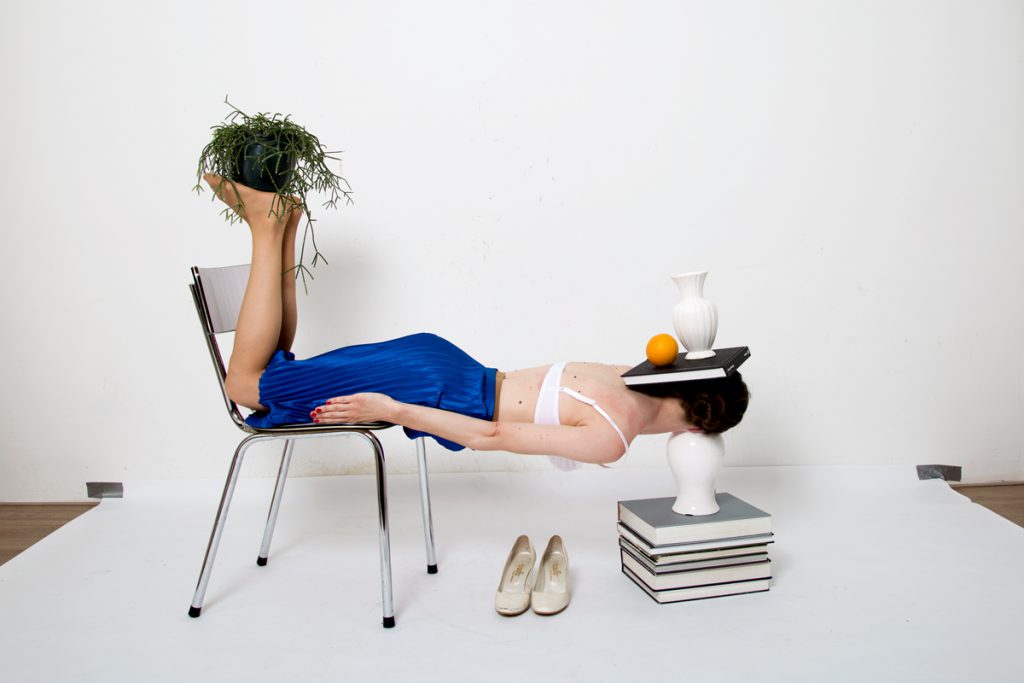
L.A. Your works and your images really appear related to the idea of domestic; at the same time they are extremely pretty and very cool. What does the term ‘domestic’ represents for you?
C.K. Domesticity has been a subject of visual arts through history. With the second-wave feminism it became a tool of protest, when artists used it to “influence cultural attitudes and transform stereotypes”. Great examples for this were the Womanhouse created by Judy Chicago and Miriam Schapiro in 1972 and the Maintenance Work by Mierle Laderman Ukeles, which began with her Manifesto for Maintenance Art 1969!.
Even though, there has been a lot of achievements in gender equality in the western society since the late 60′s the combination of domestic life with a successful career remains challenging for most women.
According to the Centraal Bureau voor Statistiek, in the Netherlands 1 out of 3 women works less or stops completely after the birth of their first child. The same report says that a quarter of all Dutch mothers doesn’t work at all, despite the Netherlands being positioned as one of the most gender-equality progressive nations in the world. These numbers reveal a co-relation between motherhood and unemployment. In other words, many women have to forcibly choose between raising their kids and having a professional career. The high cost of childcare is one of the biggest factors for this phenomena, as for a lot of women it is actually cheaper to stay at home than to work and have to pay the daycare.
This is specially a problem for artists, whose low income and status are international issues. According to the Sociaal-Economische Raad, artists based in the Netherlands barely make their living and have to cut their costs by for example not having essential insurances or a retirement plan. Having a child within the circumstances can be extremely difficult, so it’s no wonder why so many artists are postponing parenthood or decide on not having children at all.
As an emerging artist I have faced many challenges when becoming a mother. As I mentioned I have tried to work around these challenges through my projects. Later I realised that it is important to integrate domesticity into my work – instead of trying to avoid it – as for me it is very similar to an art practice. Both of them require huge commitment. Both of them are undervalued economically, while both of them are extremely important for the future of our society.
Being statistically a case of all the social groups mentioned above (woman + mother + artist) and basically at the bottom of the chain of all these systems gives me hope that by focusing on domesticity I can bring forward a discussion about the other issues as well.
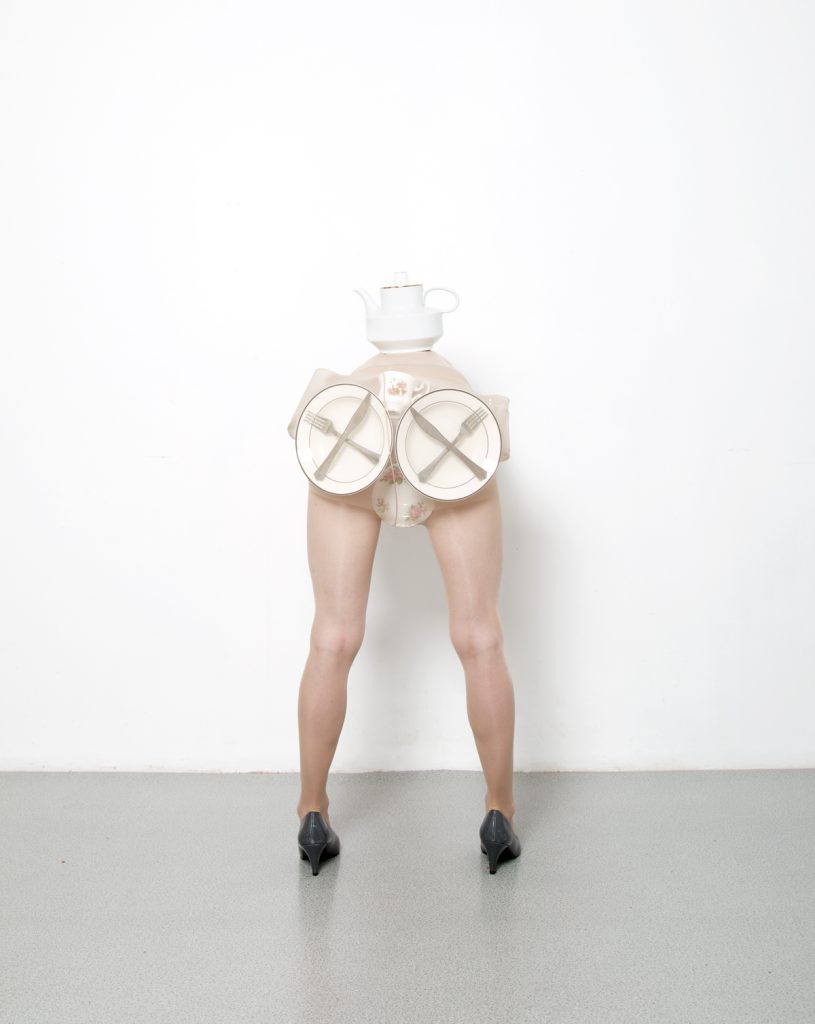
Tableware, The reminiscence of being a woman Series Photograph
Courtesy Trapez Gallery
2017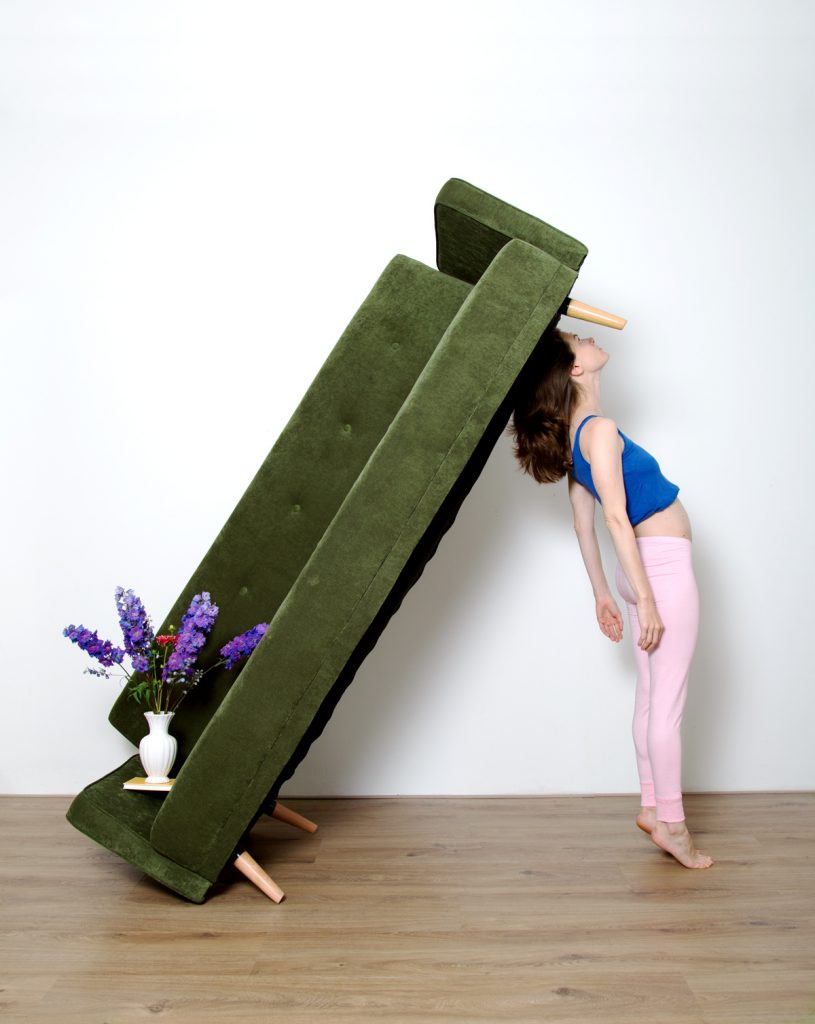
Nr. 65, Pillars of home Series Photograph Courtesy Trapez Gallery 2016
L.A. In the relation between object and people which is the role of balance?
C.K. I tend to research the relation between humans and objects as I am interested in the body as a mechanical and functional entity. This is the main reason why I use myself in my work as well, such as in a performance or as part of an installation.
I want to challenge myself as much as possible mentally and physically but without including my personality in it – the reason why you never see facial characteristics – as I want to use myself strictly as part of the project.
L.A. Which is, in your opinion, the main obstacle of our common daily life?
C.K. Well, that’s a difficult question to answer: I am pretty sure that there are many and various obstacles for everyone. However for me one of the main obstacles and also something that interests me the most is the “lack of time” or “passage of time”. Mainly because it is out of our control but I constantly try to fight it.
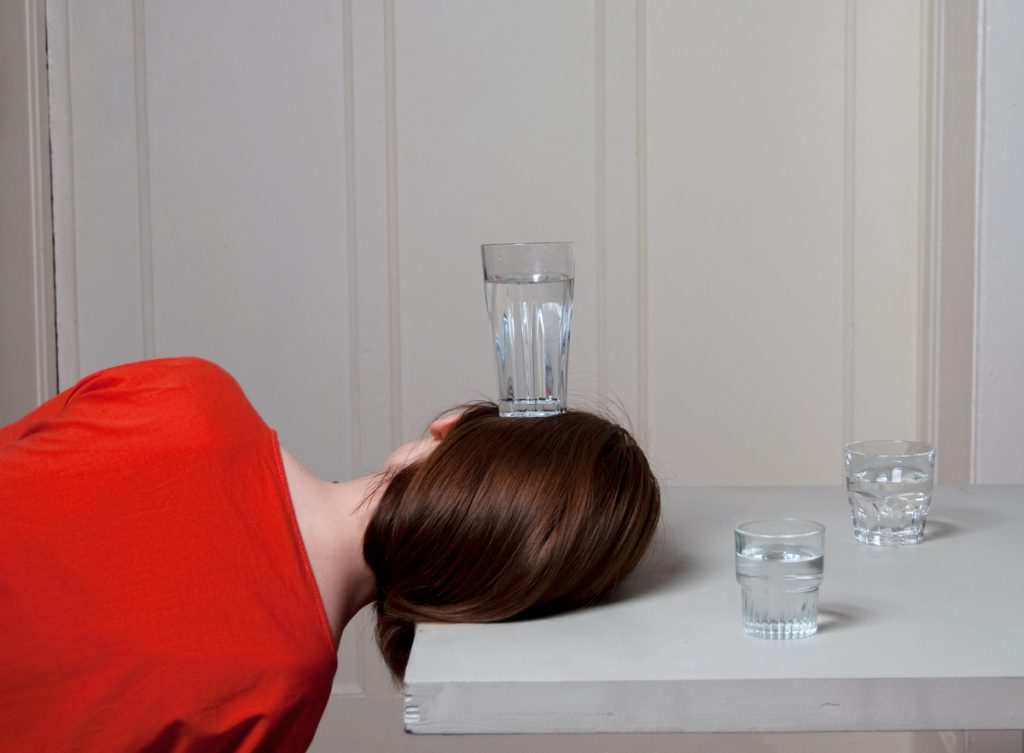
L.A. How is living and working in Amsterdam? What type of atmosphere do you feel?
C.K. I’ve actually just moved away from Amsterdam with my family, that was due to the extreme housing prices. We still live nearby in a small town and we do often go to A’dam. However if you have a family and you wish to have some extra space – and specially when you are an artists – you can’t really afford to live in Amsterdam anymore.
L.A. You did a residency in Seoul. How was this experience?
C.K. It was amazing. I was doing a 3 months residency at the SeMA NANJI Residency, which is an artist in residence run by the Seoul Museum of Art. I love Korea, love their food, loved everything about it. Also it is always an exciting experience for an artist to do a residency, because besides the time you can spend on developing a project you also have the opportunity to engage with other artists, make new friends. So I would definitely advise any artist to do as many artist in residencies as possible.
